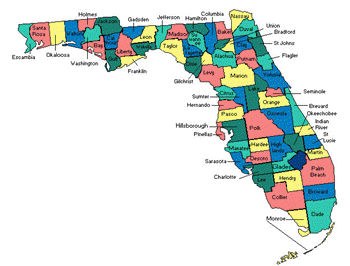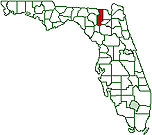Map-Drawing Mendacity Nearly Killed Democracy in Florida
Posted July 15, 2015 06:50 am
In light of the recent Florida Supreme Court decision on gerrymandering, and given the rationale that justified the illegal redistricting lines in the first place, the words of playwright Tennessee Williams have never been more on point.
“There ain’t nothin’ more powerful than the odor of mendacity. You can smell it,” Williams wrote. “It smells like death.”
 Luckily,
the court has staved off the death of democracy in
Florida. The state’s highest court sided with the
voters, who passed the Fair Districts constitutional
provisions in 2010, before the Legislature wreaked havoc
with the electoral lines in 2012.
Luckily,
the court has staved off the death of democracy in
Florida. The state’s highest court sided with the
voters, who passed the Fair Districts constitutional
provisions in 2010, before the Legislature wreaked havoc
with the electoral lines in 2012.
Last week, the court ordered the Legislature to reconvene to redraw Florida’s gerrymandered congressional map, to follow the Fair Districts guidelines this time around, and to seek judicial blessing before the new electoral lines are implemented. Observers say that even though the decision applies only to congressional districts, Florida Senate districts, too, are sure to be scrutinized soon by the courts.
One of the two Fair Districts amendments applied to drawing congressional districts, the other to state house and senate districts. The gist of the constitutional provisions is to take partisanship out of redistricting by introducing guidelines that would prevent one party from unfairly taking over, as has already happened in Florida.
The mendacity, in this case, has come to us courtesy of the Republican-dominated Legislature. GOP lawmakers co-opted African-American lawmakers to go along with their mendacious map-drawing plans using the Voting Rights Act of 1965 as subterfuge.That’s pretext, y’all. A big fat lie.
As with most Big Lies, this one starts with a kernel of truth:
“The Voting Rights Act was passed to expand majority-minority districts and then to preserve and protect them.” That’s a direct quote from USF political science professor Darryl Paulson, speaking to Sunburn editor Peter Schorsch.
It’s absolutely true that the VRA exists to empower minority voters. It’s absolutely true that minority access districts were designed to permit minority voters to elect a candidate of their preference.
What’s not true is that candidates representing minority-access districts need 65 percent of the vote to win their districts. Technically, to win, any candidate in any race needs only 50 percent of the voters plus one — not taking into consideration the Voting Rights Act’s provisions for minority access districts.
So let’s consider what the VRA wants us to do. To ensure that racial and ethnic minorities have access to government — a laudable and important goal — the district lines should be drawn to include a buffer of voters to help ensure that the minority-chosen candidate wins.
The question is: How many voters do we need to deliver the voter margins to ensure that the minority candidate-of-choice wins? Do the map-drawers build in an extra 5 percent? 7 percent? 10 percent?
The other question is: How does packing an unnecessarily large buffer of Democrats into a minority-access district affect the voter composition of surrounding districts?
The answer to the second question depends on the answer to the first. If we, as the Florida Legislature has done, add a 20 percent Democratic buffer to a given congressional district, we would naturally carve more Democrats out of surrounding districts than we would had we added a mere 5 percent buffer.
So why does the GOP want bigger, unnecessarily larger, margins of victory for minority access candidates? Is it because they’re passionate about the goals of the Voting Rights Act? Or is it because building those bigger buffers gives them an electoral advantage almost everywhere else?
Think about it: When we carve unnecessarily large numbers of Democrats into MADs, we are simultaneously carving unnecessary numbers of Democrats out of the surrounding districts, ensuring Republican wins everywhere else.
“One for you,” the GOP map-drawers say, in effect, to their colleagues across the aisle, “five for us.”
In 2014, U.S. Rep. Corrine Brown, kept her seat in one minority-access district, CD 5, by beating her opponent by 31 percentage points, garnering 65.5 percent of the vote. Brown’s uber-safe margin also ensured uber-safe margins for the surrounding, Republican districts: Crenshaw took his seat with 78 percent of the votes; DeSantis won his with 62.5 percent; Yoho, 65 percent; Nugent, 66.7 percent.
These races weren’t even close. They were never intended to be.
The truth is, no matter how much the GOP kicks and screams about the Voting Rights Act, no matter how much they profess to care about Hispanic and African-Americans being able to elect their candidate of choice, it’s all … well … mendacity.
What they care about is preserving their “bleached,” Republican-dominated districts, which far outnumber minority-access districts. What they care about is preserving their own legislative power in Tallahassee and in Washington.
Otherwise they would have been asking the questions posed above all along, with an eye toward fulfilling the Fair Districts provisions of Florida’s Constitution.
Fortunately, Florida’s Supreme Court has now asked them to do just that.
Should lawmakers appeal the ruling, as Professor Paulson suggested in his Sunburn interview? Maybe, if they want to lose.
They might not have gotten the memo, generated from the U.S. Supreme Court’s latest decision on gerrymandering: The people have the last word on redistricting when the process becomes unfairly partisan.
And we, the people of Florida, have been clear: We want Fair Districts. And we can have them while still honoring the requirements of Voting Rights Act.
It all starts with the right questions. And a nose for mendacity.
Julie Delegal, a University of Florida alumna, is a contributor for Folio Weekly, Jacksonville’s alternative weekly, and writes for the family business, Delegal Law Offices. She lives in Jacksonville. Column courtesy of Context Florida.
Image added by the Observer
This piece was reprinted by the Columbia County Observer with permission or license.

 By
Julie Delegal
By
Julie Delegal